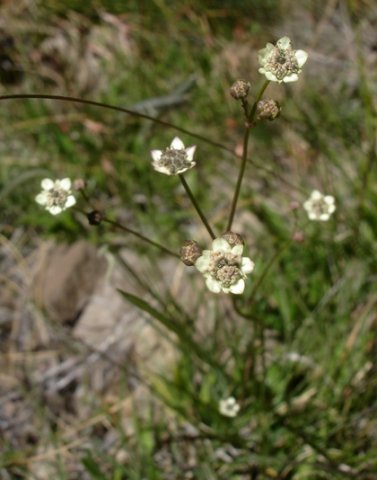Alepidea natalensis

Author: Ivan Lätti
Photographer: Judd Kirkel Welwitch
Alepidea natalensis, commonly the Natal star flower and previously scientifically known as A. baurii, is a perennial reaching heights from 20 cm to 60 cm. The upper stems are bare.
The obovoid, bristle-fringed leaves grow in a basal rosette, narrowing to the stems and the margins sometimes toothed. The pale cream midribs are conspicuous on the lower leaf parts. The leaves are from 1 cm to 2 cm long.
The flowerheads grow in panicles on long and thin, green or dark maroon stalks. Each head has usually five triangular to rounded bracts, white or rarely lilac around a few tiny florets. The outer row bracts are smaller, showing in the gaps between the big ones. The heads are about 1,5 cm in diameter. When still closed in bud, the bract outside surfaces are brown.
Flowering happens from summer to after midautumn. Pollination is done by butterflies and bees. The fruits are globose.
The species distribution is inland in KwaZulu-Natal, the far north of the Eastern Cape, the far east of the Free State and Lesotho. The photo was taken near the Sani Pass.
The habitat is montane grassland, much of it in the Drakensberg and the Malutis. The habitat population is deemed of least concern early in the twenty first century (Leistner, (Ed.), 2000; Pooley, 1998; iNaturalist; https://pza.sanbi.org; http://redlist.sanbi.org).

